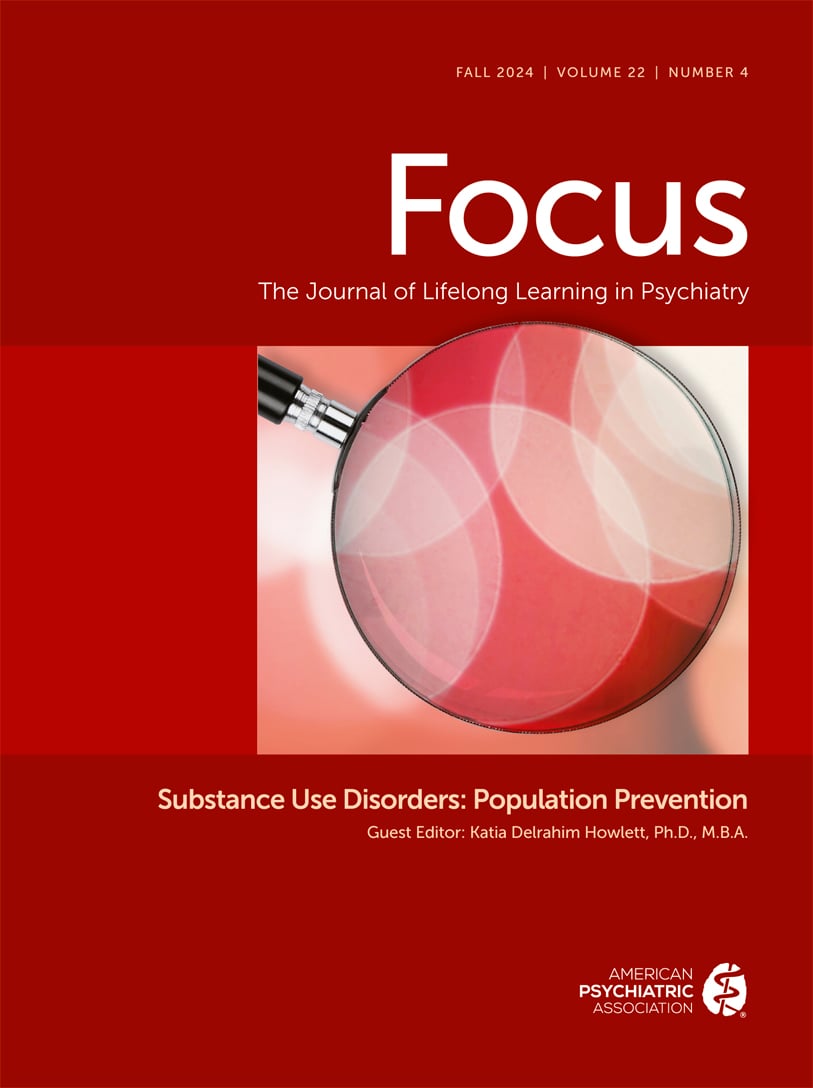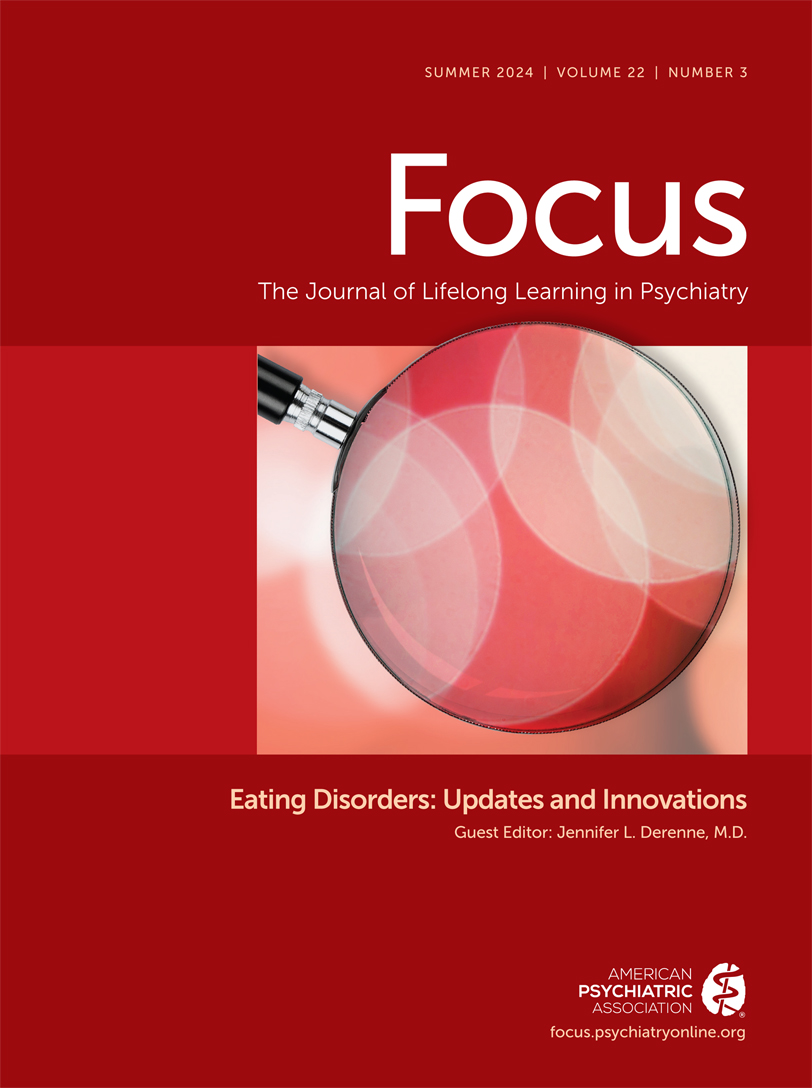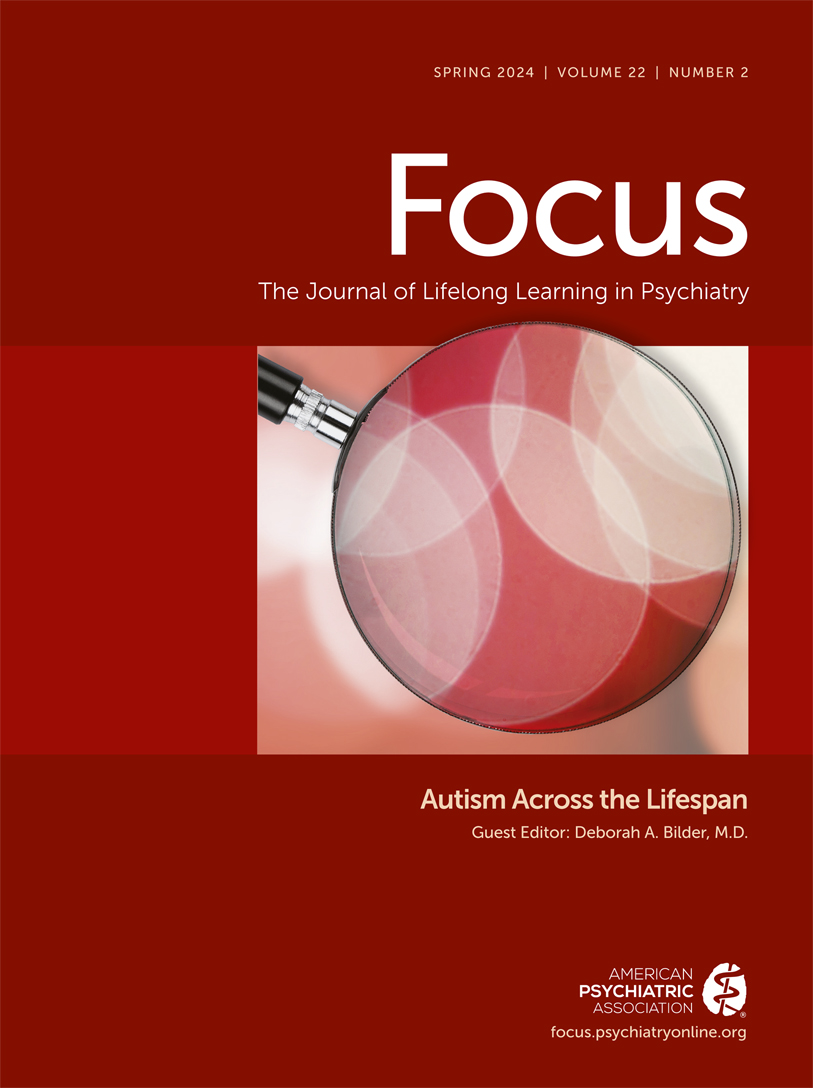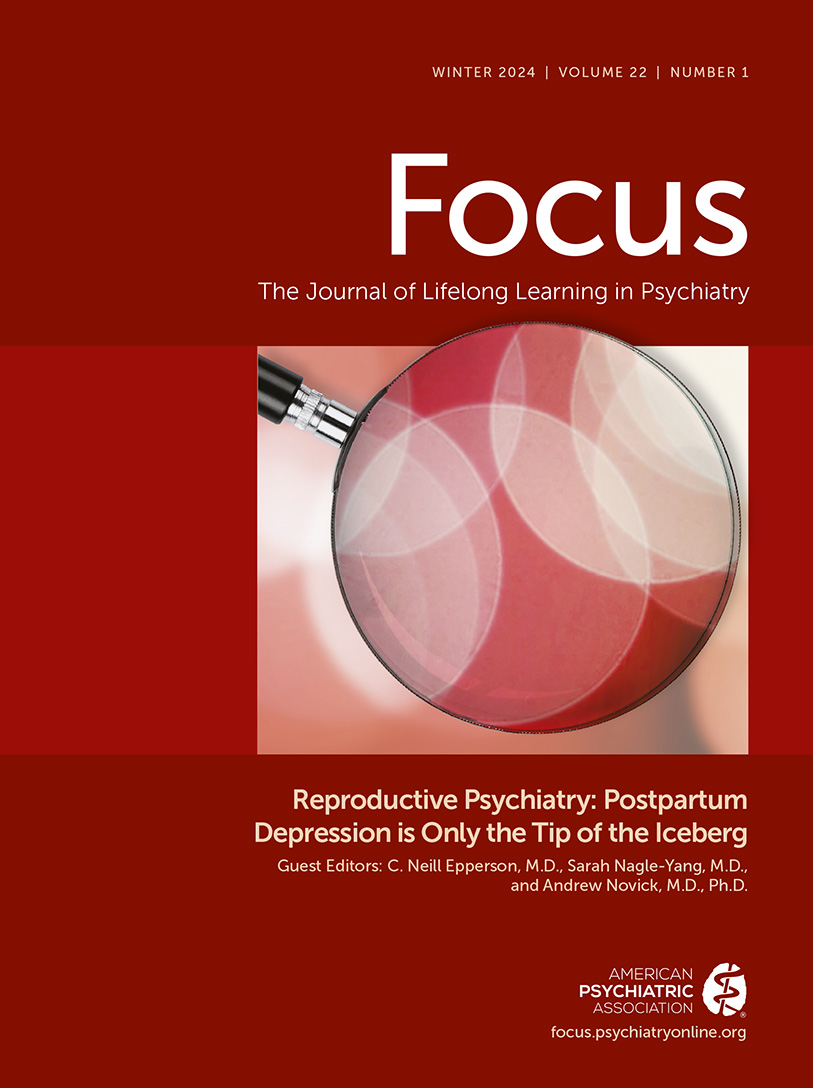Focus
- Volume 5
- Number 1
- January 2007
EDITORIAL
CLINICAL SYNTHESIS
Publication date: 01 January 2007
Pages3–13Bipolar disorder is a common condition diagnosed by the occurrence of pathological mood elevation but most often dominated by dysphoria states. Over the past 10 years, understanding of bipolar disorder and the number of evidence-based treatments have ...
https://doi.org/10.1176/foc.5.1.3Publication date: 01 January 2007
Pages14–17The contribution of genetic factors to the development of bipolar disorder is now well established. Efforts to identify specific genes that are important in the etiology of bipolar disorder are currently underway and will be aided by the convergence of ...
https://doi.org/10.1176/foc.5.1.14Publication date: 01 January 2007
Pages20–32This exercise is designed to test your comprehension of material presented in this issue of FOCUS as well as your ability to evaluate, diagnose, and manage clinical problems. Answer the questions below, to the best of your ability, on the basis of the ...
https://doi.org/10.1176/foc.5.1.20Publication date: 01 January 2007
Pages34–39APA’s Practice Guideline for the Treatment of Patients With Bipolar Disorder, 2nd Edition, was published in April 2002 (). Since that time, a number of controlled treatment studies on aspects of bipolar disorder have been completed and published or are ...
https://doi.org/10.1176/foc.5.1.34INFLUENTIAL PUBLICATIONS
Publication date: 01 January 2007
Pages49–63Despite the remarkable increase in medications validated as effective in bipolar disorder, treatment is still plagued by inadequate response in acute manic or depressive episodes or in long-term preventive maintenance treatment. Established first-line ...
https://doi.org/10.1176/foc.5.1.49Publication date: 01 January 2007
Pages64–72Background: Efficacy trials suggest that structured psychological therapies may significantly reduce recurrence rates of major mood episodes in individuals with bipolar disorders. Aims: To compare the effectiveness of treatment as usual with an additional ...
https://doi.org/10.1176/foc.5.1.64Publication date: 01 January 2007
Pages73–97Psychosocial stress plays an important role at multiple junctures in the onset and course of bipolar disorder. Childhood adversity may be a risk factor for vulnerability to early onset illness, and an array of stressors may be relevant not only to the ...
https://doi.org/10.1176/foc.5.1.73Publication date: 01 January 2007
Pages98–106Objective: The authors examined the comparative risks of switches in mood polarity into hypomania or mania during acute and continuation trials of adjunctive antidepressant treatment of bipolar depression. Method: One hundred fifty-nine patients with ...
https://doi.org/10.1176/foc.5.1.98Publication date: 01 January 2007
Pages107–110Objectives: The authors compared the switch rate into hypomania/mania in depressed patients treated with second-generation antidepressants who had either bipolar I or bipolar II disorder. Method: In a 10-week trial, 184 outpatients with bipolar depression ...
https://doi.org/10.1176/foc.5.1.107Publication date: 01 January 2007
Pages111–116The major clinical morbidity of bipolar disorder is chronic depression. Yet this depression, which is resistant to our best pharmacological treatments, may represent something else. We suggest it may involve existential despair, as a consequence of the ...
https://doi.org/10.1176/foc.5.1.111Publication date: 01 January 2007
Pages117–134A sizable body of research has now examined the complex relationship between quality of life (QoL) and depressive disorder. Uptake of QoL research in relation to bipolar disorder (BD) has been comparatively slow, although increasing numbers of QoL studies ...
https://doi.org/10.1176/foc.5.1.117Past Issues
View Issues Archive
Vol. 22 | No. 4

Vol. 22 | No. 3

Vol. 22 | No. 2
